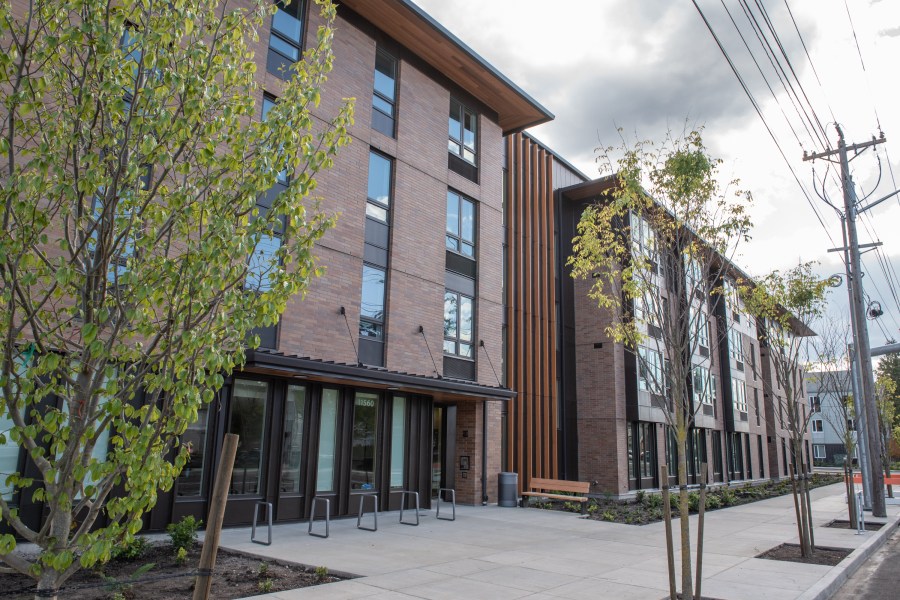PORTLAND, Ore. (KOIN) — Affordable housing is a cornerstone of Portland’s plan to end the homeless crisis, but KOIN 6 News learned there are serious questions about whether the city’s law that forces developers to include affordable housing in new projects has backfired.
Portland’s Inclusionary Housing Law was born at the end of 2016 when people pleaded with the city council to get a handle on skyrocketing housing costs.
A Portland City Council meeting from December 13, 2016 showed spirited discussion from proponents and opponents.

“There is only one reason why this concept was banned in 1999 at the state level,” said Vivian Satterfield with OPAL Environmental Justice Oregon. “Profits were valued higher than people.”
Felisa Hagins with the Service Employees International Union said, “Today is your chance to live up to the promise of livability.”
Others, like Dennis Allen with the Oregon LOCUS Developers Coaltion, warned it could backfire.
“We have to be careful we get it right and it can be a cautionary tale if we don’t,” he said that day.
And Steve Novick, who was then a City Commissioner, said, “These are tough choices and we don’t want to err in either direction.”
The Inclusionary Housing Law passed unanimously. It was later altered and now it forces developers who build projects of 20 or more units make 20% of the units meet affordability standards, in exchange for incentives like tax exemptions.
What is ‘affordable’?
In this context, “affordable” means the rent must be set at 80% or below of median income. Developers have the option of only doing 10% of the units at affordable rates if they drop the income threshold to 60%.
Two other options are to pay a fee instead or build the affordable housing at a different location.
But “affordable” does not mean cheap.

The City of Portland said that based on the current local median incomes, an affordable one-bedroom rent is still about $1598 per month, or $1918 for a 2-bedroom unit.
Some people in the development world said the Inclusionary Housing Law is one of the factors hindering development.
“Our inclusionary zoning, unfortunately, if the intentions were good to provide more affordable housing, it’s been a failure,” said Patrick Gilligan with Lincoln Property Company. “It’s very hard to underwrite in regards to how you’re going to finance a project to go forward.”
Philanthropist and developer Jordan Schnitzer was more succinct.
“They don’t have a clue,” he said.
Barriers to development, including the Inclusionary Housing Law and the city’s slow permitting process, were among the topics discussed at a January symposium of the commercial real estate group called “Revitalize Portland.”
“Everything is about affordability and almost every housing affordability thing we do makes housing less affordable,” said Jerry Johnson of Johnson Economics.
Cayla Wardenburg of Jones Lang LaSalle Brokerage agreed. “The pipeline shut off to delivery of those units, so all of a sudden living in your one-bedroom apartment in Portland was a lot less affordable than it should be based on area fundamentals and overall wages.”
Wardenburg’s company complied a chart showing the number of permits submitted for multifamily housing projects in the city of Portland of 50 or more units. They plummeted after 2017 when the Inclusionary Housing Law began.
Portland Mayor Ted Wheeler said the law is a “very sound theory” although many said it has backfired.
“The question is, did we get the balancing act right between the incentives and the cost of development of that affordable housing? If we didn’t get the balance right, then the incentive isn’t strong enough for developers to want to develop the housing in the first place,” Wheeler told KOIN 6 News.
City officials say there is a shortage right now of 25,000 affordable housing units — even after 169 inclusionary housing projects since 2017 have accounted for about 1000 units.
Work group studies program
Sam Diaz of 1000 Friends of Oregon is one of 10 people on a Portland City Council-funded work group studying the effectiveness of the Inclusionary Housing Law.
So far he said the group has heard success stories but has not heard from developers who haven’t been able to overcome funding obstacles, or as he called it, “stories of failure because of the policy.”

“We would invite, and I would love to see, that kind of data submitted to the advisory committee and to the Housing Bureau,” he told KOIN 6 News. “The expenses that the developer had, the revenue, the financing the developer lined up, but the make or break was the Inclusionary Housing Policy.”
To date, they “haven’t seen that kind of data presented to the committee,” he said.
It’s also not known how the development has been affected by so many things that happened since the law was passed: the pandemic, interest rate hikes, changes to the tax code, construction costs, supply chain problems and labor shortages.
“”I think we will never know if this is the policy to blame for this or not,” Diaz said.
This study was supposed to wrap up in April but the work group extended their study for 2 more months to compensate for a change of leadership in the housing bureau after it was transferreed from Commissioner Dan Ryan to Carmen Rubio.
The workgroup recommendations will likely come following their July meeting.
Wheeler is open to hearing what the group concludes.
“I’ve pledged that if it needs to be tweaked, we’ll tweak it. If the conclusion is that it hasn’t worked, then we’ll scrap it,” the mayor said.
“But rather than just using anecdotal evidence, I’d actually like to see what the facts are. We’ve had some developers use it very successfully and they say it works really well. We’ve had other developers say it was a deal breaker when I tried to go out and get funders for my project. So I want to take a deeper dive and look at the facts before we come to a conclusion.”